Quick Overview: The Essential WUDU STEP BY STEP Process
Before diving into the detailed explanation, here are the essential wudu steps every Muslim should follow:
- Make niyyah (intention) to perform wudu
• Say Bismillah (In the name of Allah)
• Wash both hands three times
• Rinse the mouth three times
• Sniff water into nostrils three times
• Wash the entire face three times
• Wash arms from fingertips to elbows three times
• Wipe the entire head once
• Clean the ears once
• Wash both feet three times
• Recite the Dua After Wudu
Download Your Free Step-by-Step Wudu Guide (with Visuals)
Struggling to remember the correct steps of Wudu (Ablution)? We’ve made it easy for you!
📘 Click below to download our beautifully designed Wudu guide — completely free!
This step-by-step visual guide walks you through each part of Wudu with clarity, making it ideal for beginners, kids, or anyone looking to refresh their knowledge.
👉 [Download the Free Wudu Guide Now]
What is Wudu and Why is it Essential?
As mentioned in The Quran, in Surah Al-Baqarah:.
Allah says, “Indeed, Allah loves those who are constantly repentant and loves those who purify themselves” (إِنَّ اللَّهَ يُحِبُّ التَّوَّابِينَ وَيُحِبُّ الْمُتَطَهِّرِينَ) [Surah Al-Baqarah, 222].
Wudu represents a fundamental form of purification in Islam, serving as both physical cleansing and spiritual purification before acts of worship. This ritual purity is not merely a recommended practice but an essential requirement that every Muslim must complete before performing daily prayers.
Al-Quran:
When you rise for prayer, wash your faces and your hands up to the elbows, wipe your heads and wash your feet to the ankles” (Surah Al-Maidah, 5:6).
The Messenger of Allah emphasized the critical importance of this process, stating that no prayer is accepted without proper purification. This highlights how wudu serves as an important part of preparing oneself for communion with Allah alone.
Understanding the Spiritual Significance
Wudu goes beyond simple physical cleansing – it represents a state of purity that connects the believer’s heart and mind with their Creator. Through this act of worship, Muslims demonstrate their respect and preparation for approaching Allah in prayer. The process helps individuals transition from worldly concerns to focused devotion.
The Complete Step-by-Step Guide to Perform Wudu
Step 1: Making the Intention (Niyyah)
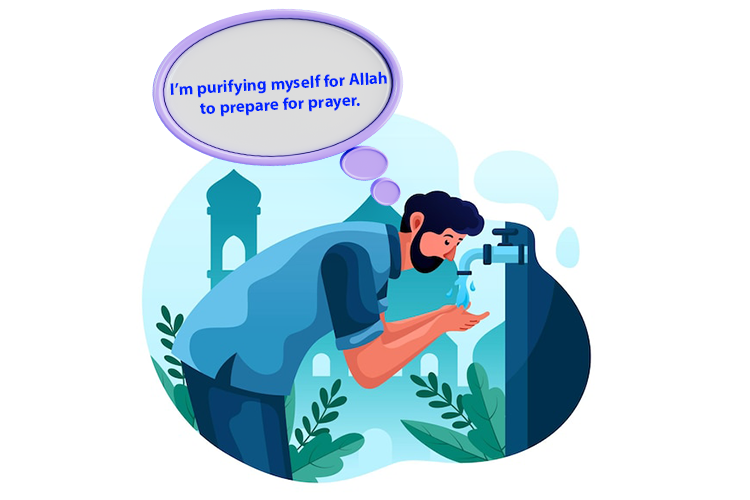
The first step in performing wudu involves making a sincere intention in one’s heart. This isn’t about reciting special statements aloud, but rather a matter of the heart where one decides to purify themselves for the sake of Allah. The intention sets the spiritual foundation for the entire process of wudu.
Step 2: Say Bismillah

Before beginning the physical aspects of purification, one should say “Bismillah” (In the name of Allah). This invocation can be said silently and serves as a reminder that this act of worship is performed seeking Allah’s blessing and guidance.
Step 3: Washing the Hands
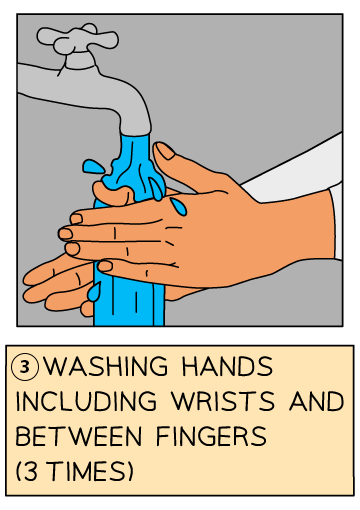
Begin by washing both hands thoroughly. Start with the right hand (because Prophet Muhammad (peace be upon him) taught us to begin with our right side first), washing from the fingertips up to the wrists three times, ensuring clean water reaches every part. Follow the same process with the left hand three times. This step establishes the foundation of physical cleanliness.
Step 4: Rinsing the Mouth
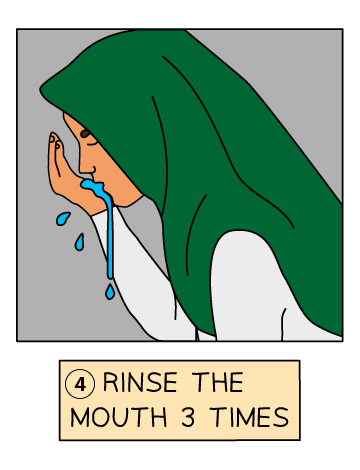
Take a handful of water in the right hand and rinse the mouth thoroughly three times. This step ensures that the mouth is properly cleaned as part of the purification process. Make sure water reaches all areas of the mouth during this cleansing.
Step 5: Cleaning the Nostrils

Using the right hand, take water and gently inhale water into the nostrils, then blow it out. This should be done three times, being careful not to use too much water to avoid discomfort. Some people worry about conditions like Naegleria fowleri, but using safe water and gentle techniques eliminates such concerns.
Step 6: Washing the Face
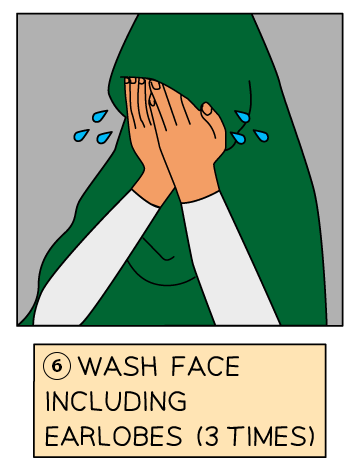
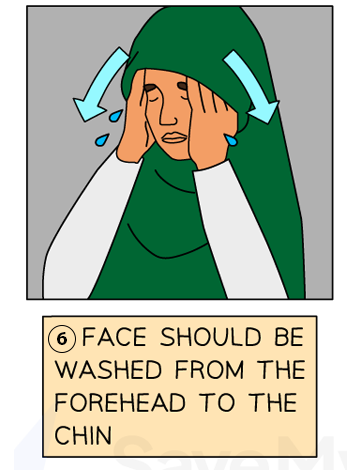
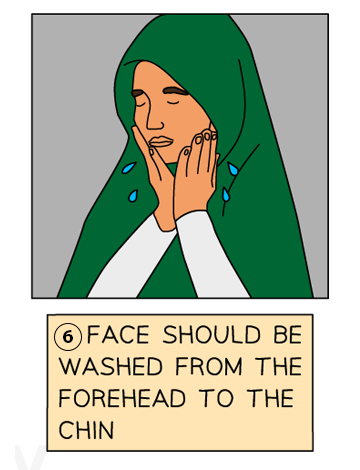
Wash the entire face three times, ensuring water covers from ear to ear and from the forehead to the chin. For those with facial hair, use wet fingers to pass through the beard, ensuring water reaches the skin underneath. This comprehensive washing purifies one of the most visible parts of the body.
Step 7: Washing the Arms
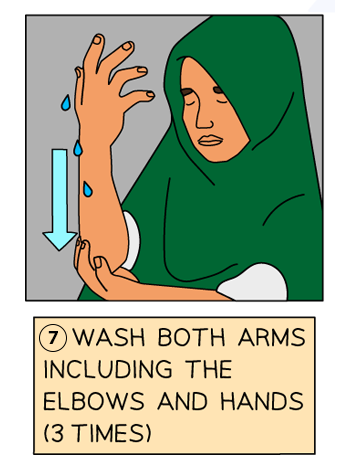
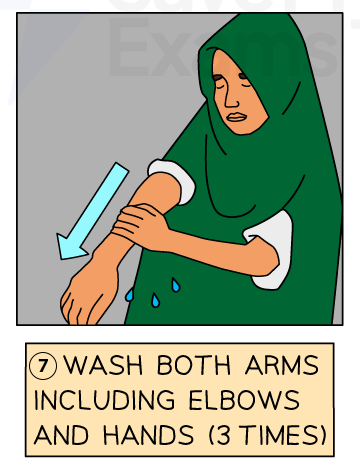
Wash the right arm first, starting from the fingertips and extending to the elbow three times. Ensure no part remains dry, then repeat the same process with the left arm three times. This step purifies the lower arms and hands completely.
Step 8: Wiping the Head
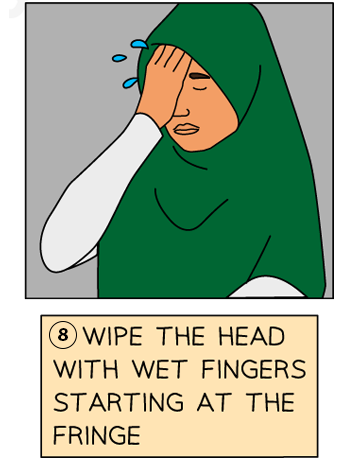
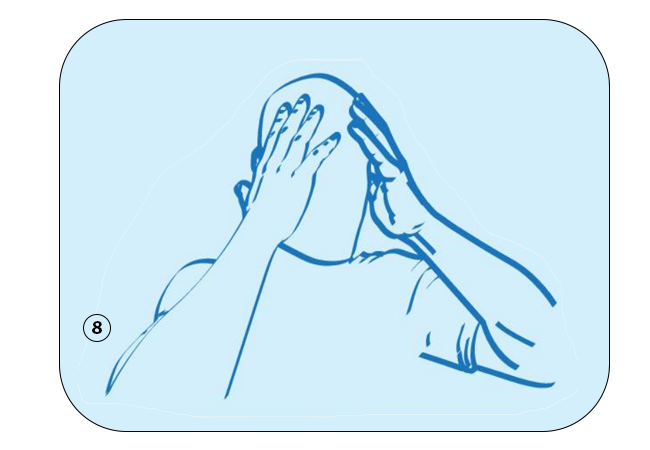
Unlike washing, this step involves wiping the entire head once with wet hands. Move from the front of the forehead to the back of the head, then return to the front. Whether someone has long hair, short hair, or is bald, the technique remains the same.
Step 9: Cleaning the Ears
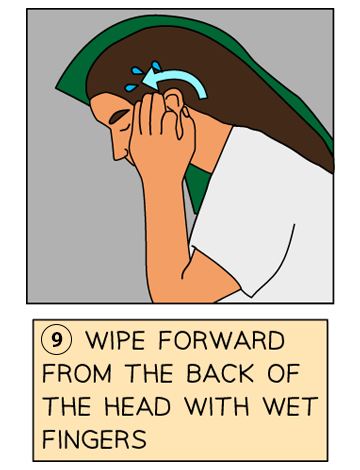
Using the same moisture from the previous step, clean the ears once. Use the index fingers to clean inside the ears and the thumbs to clean behind them. This completes the purification of the head region.
Step 10: Washing the Feet
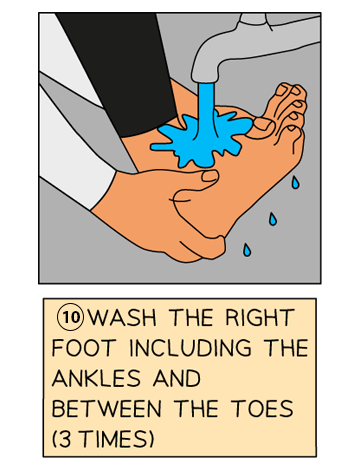
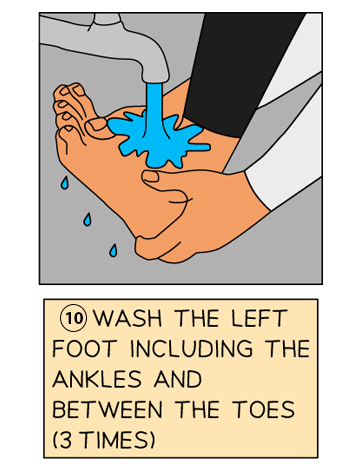
Finally, wash the right foot three times, starting from the toes and including the ankle. Ensure water reaches between the toes and around the ankle area. Repeat the same process with the left foot three times. Pay special attention to ensure complete coverage.
Step 11: Reciting the Shahada and Supplication
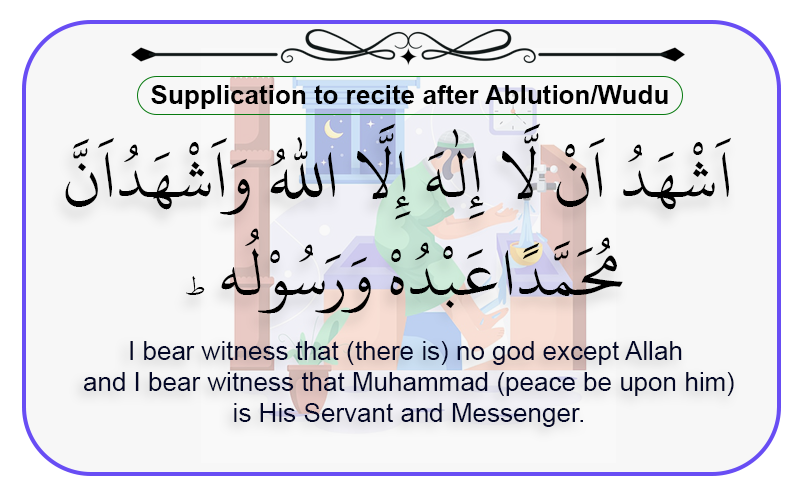
Upon completing the physical steps, recite the Shahada: “Ash-hadu an la ilaha illallahu wa ash-hadu anna Muhammadan abduhu wa rasuluh” (I testify that there is no god but Allah, and Muhammad is His servant and messenger).
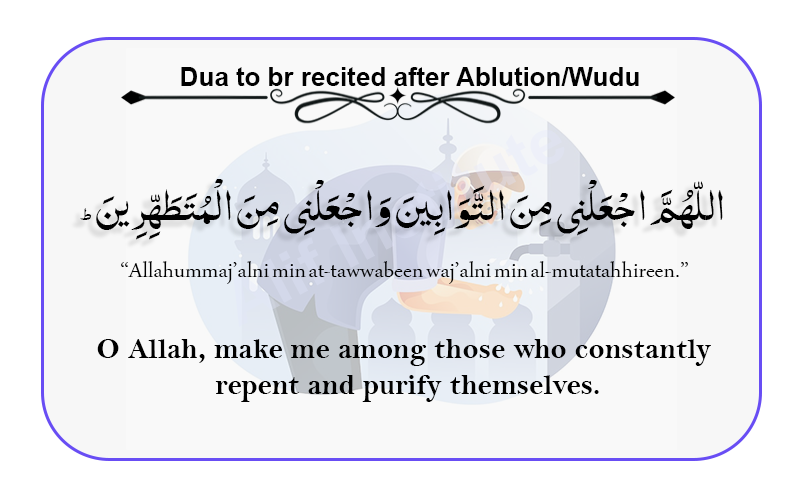
Follow this with the Dua After Wudu: “Allahumma j’alnee mina tawabeen waj’alnee minal mutatahhireen” (O Allah, make me among those who seek repentance and make me among those who are purified).
Special Considerations and Practical Tips
Performing Wudu with Socks
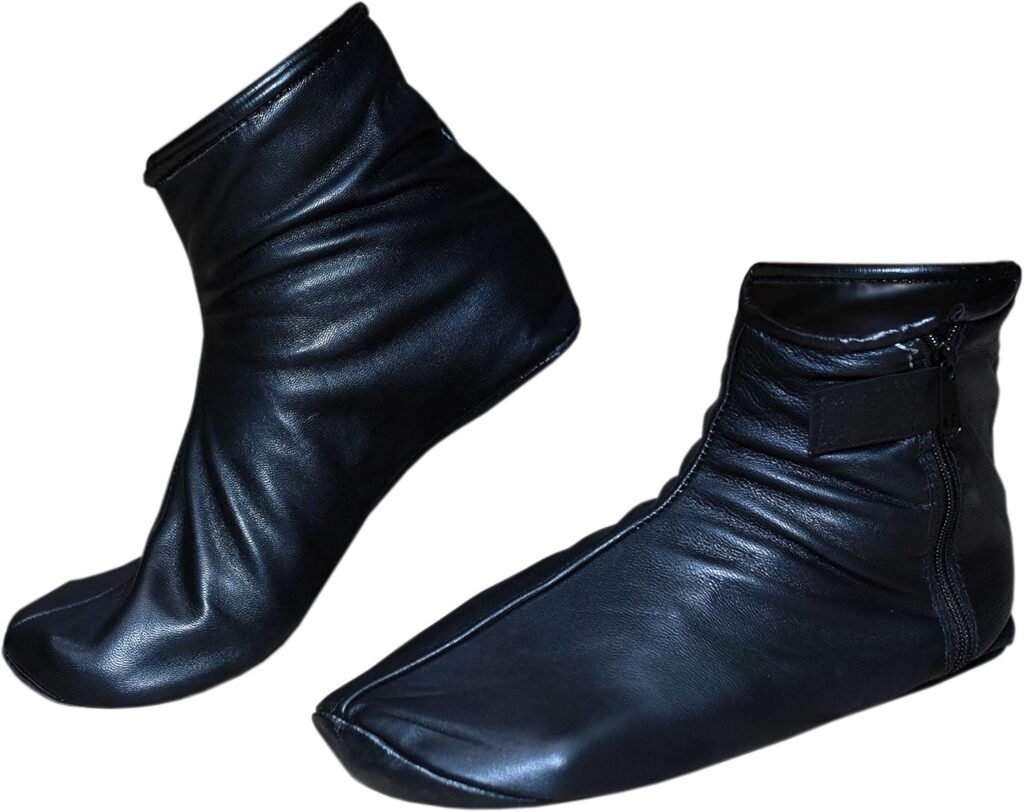
When someone puts on socks (Special leather socks that don’t absorb water) while having wudu, they can wipe over them during subsequent ablutions instead of washing the feet directly. Simply wipe over the top of each foot once with wet hands. This concession, demonstrated by Prophet Muhammad, makes the process more practical for daily life.
What Breaks Wudu?
Understanding what nullifies wudu helps maintain ritual purity:
- Natural discharges (urine, stool, or passing gas)
- Deep sleep or becoming unconscious
- Sexual intercourse or ejaculation
- Any other natural discharge from the private parts
- Make sure to remove anything that blocks water from reaching the skin, like nail polish, mud, or wax.
Using Different Water Sources
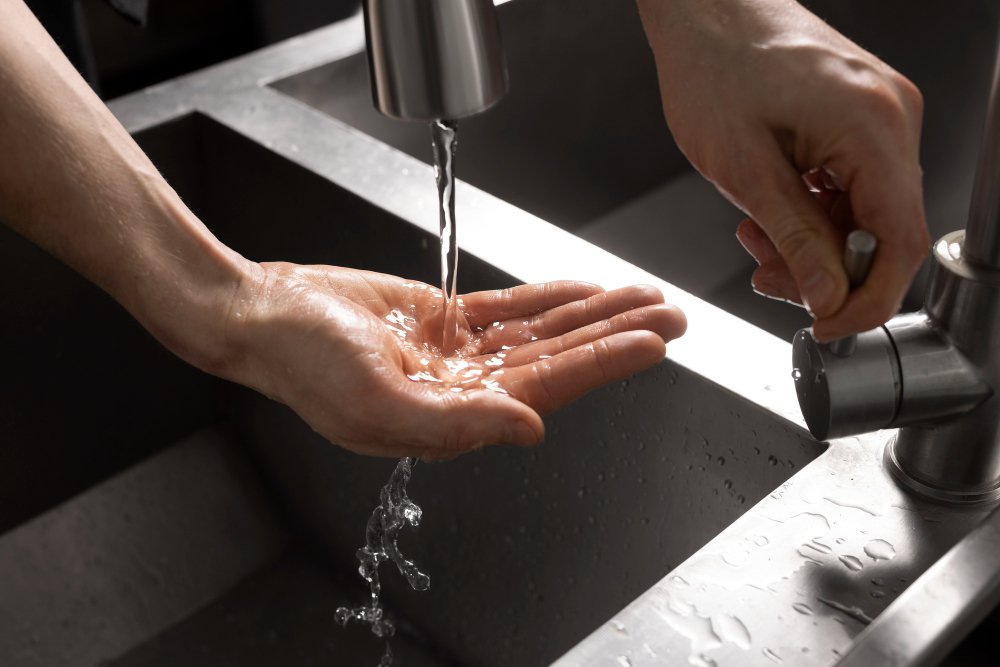
Clean water from various sources can be used for wudu, including tap water in most areas. In warmer areas of the world or regions with water quality concerns, ensuring access to safe water becomes important for both health and spiritual requirements.
Learning Resources and Further Study
Online Quran and Islamic Studies
Many Muslims benefit from online Quran classes and Islamic Studies programs that provide a comprehensive understanding of purification rituals. These resources often include detailed explanations of Islamic jurisprudence related to Wudu and other acts of worship. You can also experience this learning firsthand by trying Alif Institute’s free 3-day trial classes, where our qualified instructors guide you through the essentials of Islamic practice with clarity and care.
Arabic Language Learning
Understanding the Arabic language enhances one’s appreciation of the supplications and terminology used in Wudu. At Alif Institute, we offer free 3-day trial classes for those interested in deepening their knowledge of Arabic and Islamic practices — helping you connect more meaningfully with your worship.
References from Islamic Literature
The Holy Quran, particularly Quran 5:6, provides the foundational guidance for purification. Sahih Muslim and other authentic hadith collections offer detailed explanations of how the Prophet Muhammad ﷺ performed wudu, serving as the perfect example for all Muslims.
Classical scholars like Abu Huraira, Abu Hurairah, and Abu Hurayrah narrated many traditions that help us understand the proper methodology and spiritual significance of this important ritual.
Conclusion: Embracing Purification as Worship

Performing wudu represents much more than a preliminary step before prayer – it’s a meaningful act of worship that purifies both body and soul. Through this step-by-step guide to perform wudu, Muslims can approach their daily prayers with confidence, knowing they’ve properly prepared themselves for communion with their Creator.
The process connects believers with centuries of Islamic tradition while serving practical purposes of cleanliness and spiritual preparation. May Allah accept these good deeds and grant all Muslims the ability to maintain consistent purification in their daily worship.
For those seeking to deepen their understanding of Islamic practices, consider exploring comprehensive Islamic Studies programs, Quran Online resources, or Arabic Language courses that provide a broader context for acts of worship like wudu.




1 Comment
Khizar
July 30, 2025nice